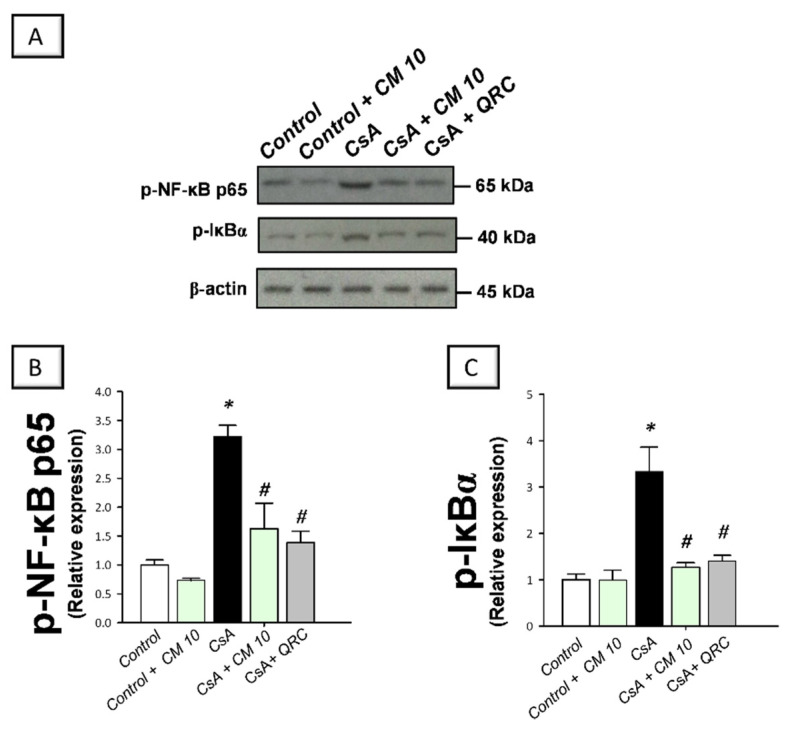Figure 4.
Effect of camel milk administration on the activation of the nuclear factor kappa B (NF-κB) pathway in cyclosporine-evoked renal damage in rats. (A) Representative immuno-blots that demonstrate the inhibition of the nuclear factor-kappa B pathway by camel milk, as evidenced by lowered phosphorylation of NF-κBp65 (Ser536; upper panel) and the inhibitory protein for NF-κB (IκBα; Ser32; lower panel). (B) Quantification of p-NF-κBp65 relative protein expression. (C) Quantification of p-IκBα relative protein expression. Values for the Western blotting are displayed as mean ± SEM, for n = 3 independent experiments per each group. The X-ray films were photographed with an HD-Nikon camera and the densitometric analysis of protein bands was carried out using Image J software. Equal loading/protein transfer was proven by probing with anti-β-actin. * Significance vs. control values at p < 0.05; # Significance vs. CsA values at p < 0.05. CsA, cyclosporine (20 mg/kg/day, s.c., for 3 weeks); CM 10, camel milk (10 mL/kg/day, by gavage, for 3 weeks); QRC; the reference antioxidant quercetin (50 mg/kg/day, by gavage, for 3 weeks). Original western blot images are shown in Figure S1.

